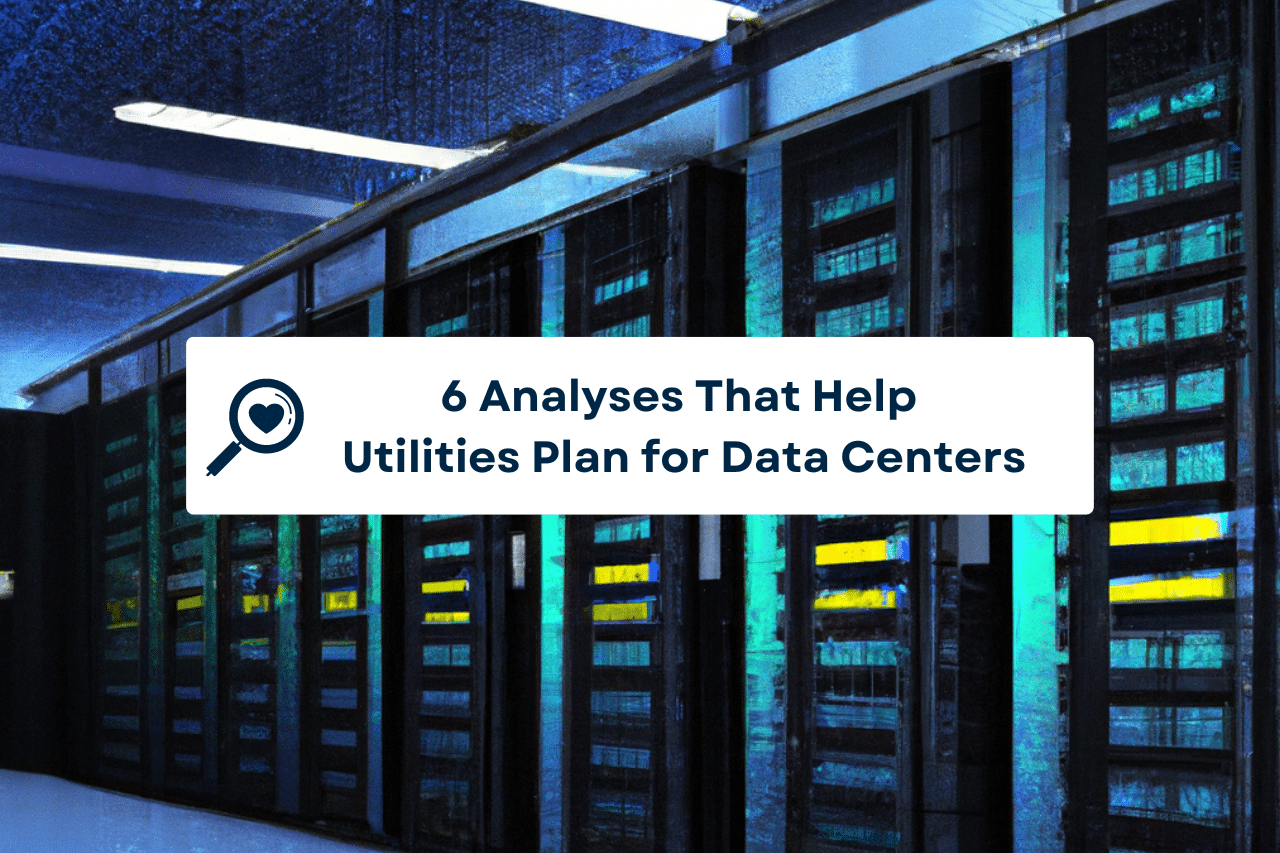Data centers, growing at a rapid rate due to cloud computing and digital services, are a major opportunity for electric utilities. Utilities can increase their revenue, lower costs, and modernize the grid with data center load. Load forecasts estimate that data centers, increasingly driven by AI computing, can take as much as 9.1% (500 TWh/y) of an electric grid’s supply in 2030. Some utilities we’ve spoken with have said that 50 MW of capacity may be needed each day to serve data center load. Additionally, AI has the potential to create many grid efficiencies in power generation and transmission, and AI data centers can act as grid resources themselves.
Whether they’re seen as a burden or a solution for the grid, utilities are faced with difficult, time-sensitive decisions to either build out more infrastructure or know for certain which parts of their grid can handle load from data centers. To avoid speculation in either scenario, there is no other way to approach questions like these without using grid data.
So how can grid data be used by utilities to accommodate data center interconnection? Below, we list six key analyses that put grid data to use towards achieving this.
6 analyses from Awesense that support AI data center interconnection
- Coincident peak (CP) and non-coincident peak (NCP): Leveraging topological, time series, and other data from systems such as SCADA, coincident peak (CP) and non-coincident peak (NCP) provide insight on when grid loads place the highest demand on the grid, both individually and relative to the system’s peak. This information helps utilities design rate structures, manage peak load cost and grid stress, and plan for future capacity needs. In this case, CP and NCP analysis enables utilities to better support data centers, particularly those with AI workloads that may have unpredictable and intensive power requirements. Learn more about CP and NCP analysis.
- Feeder and lateral capacity: Feeder capacity and lateral capacity analysis allows utilities to evaluate the current capacity and loading conditions of the grid at both the feeder and lateral levels. By analyzing the load distribution and identifying potential bottlenecks, utilities can prioritize grid upgrades or optimize load management to ensure that sections of the grid that have data centers operate on optimal and balanced levels. This proactive approach is particularly valuable in planning for data center interconnection or expansion. Learn more about feeder and lateral capacity.
- Actual vs. contracted grid capacity: Asset data and time series data, when processed into a single model, can be used to identify gaps between contracted capacities and actual consumption data. Utilities can optimize consumer and contracted load, and align these values to ensure that sufficient capacity is available for data centers without reservation of unnecessary grid resources. This avoids costly overbuilds and lowers the cost of power for optimized consumers. Learn more about grid capacity.
- Master circuit breaker value vs. measured values: In this analysis, utilities can compare the maximum load capacity indicated by the master circuit breakers with the actual measured load, allowing them to adjust master circuit breaker values to true consumption patterns. This can free up grid capacity, reduce the need for expensive infrastructure upgrades, and improve grid efficiency. What this means for data centers is that their reserved capacity accurately reflects actual usage. Learn more about measured values.
- Dynamic line rating (DLR): DLR helps maximize the amount of load T&D lines can carry by analyzing temperature and wind speed data from grid-connected sensors and devices. Using data models, a grid planner can determine how much potential capacity can serve load from data centers. This can help avoid unnecessary grid upgrades and also avoid the risk of overloads and outages. Learn more about dynamic line rating analysis.
- Load forecasting: Forecasting load from data centers is integral for potential grid expansions, optimized energy generation, and managed resource allocation. This ensures that the grid can meet the anticipated demand without overextending its resources, providing a reliable power supply to data centers while avoiding unnecessary costs. Learn more about load forecasting.
Planning for the future grid with data analysis
Preparing for data centers requires intensive planning with manifold data analyses, the examples above being just a handful of key approaches on the Awesense Platform. Many more custom analyses can be achieved depending on a utility’s needs.
However grid planners seek to analyze data, it is critical to build a comprehensive data model, or digital twin, that accurately reflects a utility’s electric grid. This way, use cases and scenarios can be constructed on top of the grid model and understood before making critical business developments, such as tariff innovation, new financing paradigms, construction and supply chain optimization, renewable energy deployment, and more.
Conclusion
For the massive demand that data centers come with, utilities, their customers, and regulatory bodies cannot afford to build (or not build) infrastructure with uncertainty. Analyzing reliable grid data effectively is one of the most critical steps to closing the uncertainty gap, and is why Awesense’s data tools are so useful in this application. Our Energy Data Engine™ normalizes and synchronizes the grid data utilities need, and tools like True Grid Intelligence and Awesense’s APIs bring the data into one place for analysis and visualization. Leveraging the right tools such as these will help grid planners take full advantage of the opportunities that data centers present.




